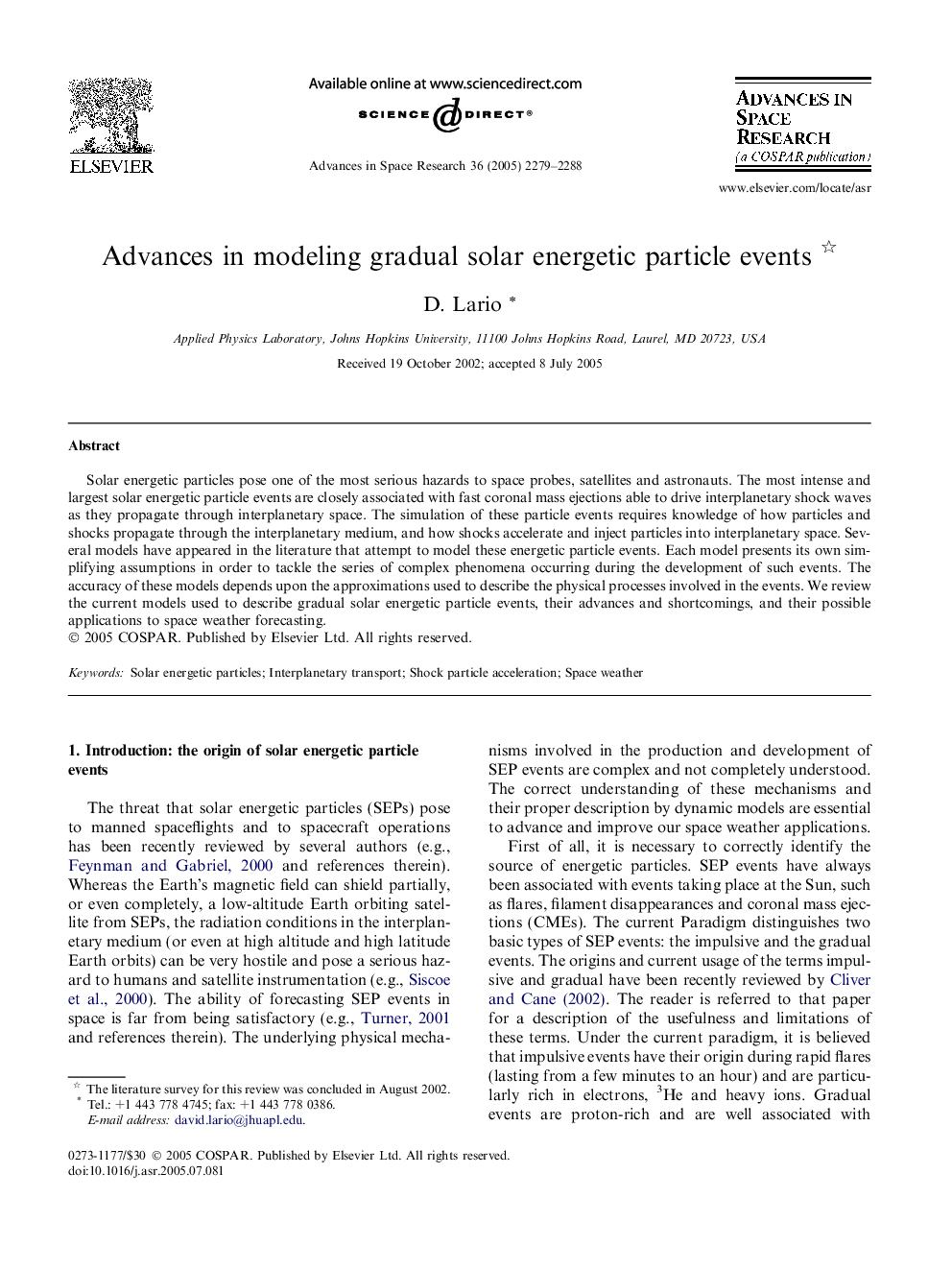| Article ID | Journal | Published Year | Pages | File Type |
|---|---|---|---|---|
| 1768644 | Advances in Space Research | 2005 | 10 Pages |
Solar energetic particles pose one of the most serious hazards to space probes, satellites and astronauts. The most intense and largest solar energetic particle events are closely associated with fast coronal mass ejections able to drive interplanetary shock waves as they propagate through interplanetary space. The simulation of these particle events requires knowledge of how particles and shocks propagate through the interplanetary medium, and how shocks accelerate and inject particles into interplanetary space. Several models have appeared in the literature that attempt to model these energetic particle events. Each model presents its own simplifying assumptions in order to tackle the series of complex phenomena occurring during the development of such events. The accuracy of these models depends upon the approximations used to describe the physical processes involved in the events. We review the current models used to describe gradual solar energetic particle events, their advances and shortcomings, and their possible applications to space weather forecasting.
